The things we record and why - part four
We are no longer building saddle trees, but we have two videos about how Western saddles fit horses available on our westernsaddlefit.com website.
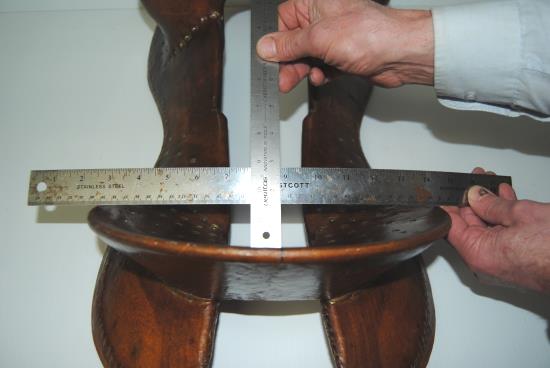
Continuing on in the saga of all the things we measure and keep track of, we next get to the cantle and horn, and finish off with miscellaneous bits and pieces.
Cantle type
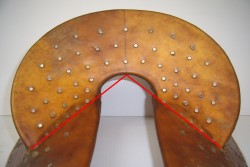 |
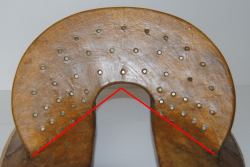 |
The first thing we record is the cantle “type”, and there are only two real choices in that column – regular or Taylor. What are these and why do we use them? Well, it all has to do with dish and angles and geometry. I tried to explain about them in the Cantles Conundrums page, so I will refer you there. That is a whole lot easier than typing it all out again, and I go for the “work smarter, not harder” adage wherever possible…
Cantle height
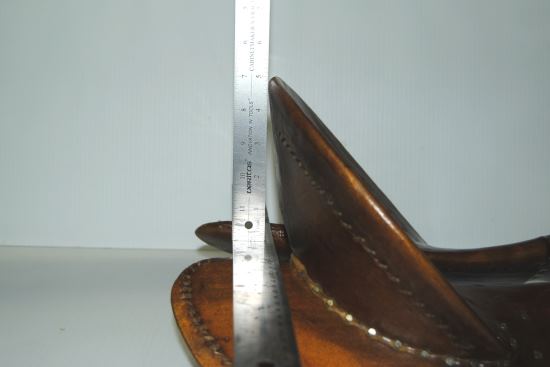
I talk about how we measure this (and the following things) on the Measuring a Saddle Tree page, so I won’t go over that again here either. But it is interesting to check the stats and see the range of cantles we have built. Other than side saddles (and they don’t count because they are totally different) we have only built one tree with a cantle less than 3” tall – and it was a duplicate tree. Three inch tall cantles are not a real common order for us, but we have been building more of them lately. 3 1/2" is much more common than 3”. The most common height we build is a 4” tall cantle, but we do a lot of 4 ½” and quite a few 5” as well. We have even done a few as tall as 6”.
There is a lot of regional difference in common cantle heights. Down Texas way, 4” and under are common. Up in Western Canada and the northwest US, 4” and up are typical orders. Cantle heights and cantle styles also correlate, with the vast majority of tall cantles going with slick forks of various types and the shorter cantles by and large going with swell forks. But there are always exceptions.
Cantle width
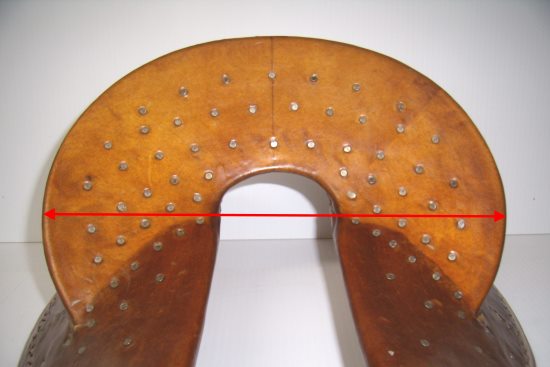
There is quite the range here as well. The narrowest cantle we have built on an adult saddle is 10”. We’ve only done one of them. We have done a few at 10 ½” wide, primarily for one maker, and quite a few at 11”. Twelve inches to 13” are the vast majority of what we make, but we have done a very few at 14” and even one at 14 ½”. (This, of course, excludes side saddles which, as we said before, are quite different...)
Cantle Angle
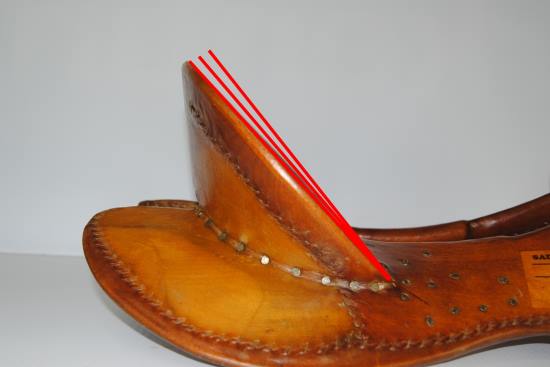
When Rod started building trees, he was given only three cantle angles. We now have jigs for six, but the three newer ones are very rarely used. Cantle height and cantle angle tend to be correlated as well, with lower cantles having a flatter angle and taller cantles having a more stood up angle. This may sound backwards, as you would think a taller cantle should be more laid back to avoid catching a rider in the back if things went a little, shall we say, “not according to plan”. But actually, it doesn’t work that way, as the taller a cantle gets, the farther back it goes, no matter what angle it is at. Like we say, “Cantles are complicated”.
Dish
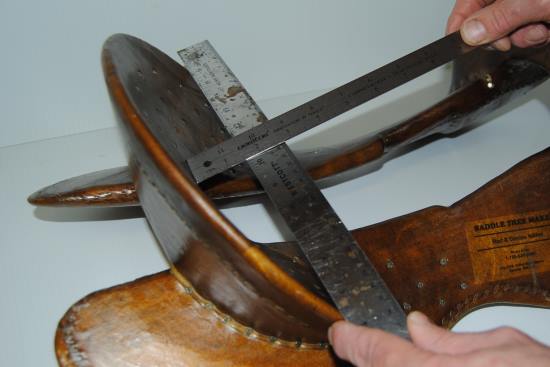
This measurement is on the tree, but the saddle maker changes everything when he puts in his ground seat, and saddle makers may have a preference for how much dish they like based on the way they put in their ground seat. Sometimes the choice of dish is based on what the rider likes in a seat as well. By far the most common dish ordered is 1 ¼”. Things are pretty evenly split between 1" and 1 1/2". Beyond that, we have made a few with 1 ¾”, and a few with only ½”. We even made a couple reproduction trees with absolutely no dish. They were interesting to do, as we had to figure out totally new angles to make them fit on the bars.
Dish angle
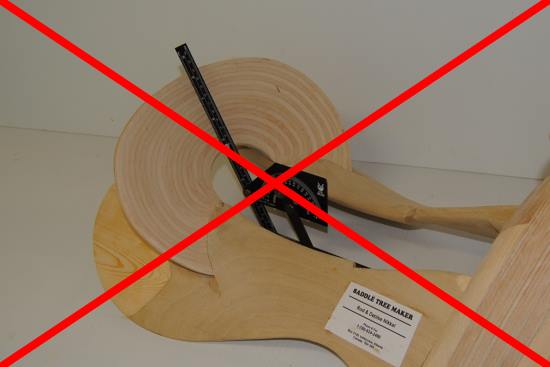
Something else we measure and record is what we call “dish angle”, measured in the wood off the table, that gives an idea of the slope of the face of the cantle. I put the picture up with an X over it to tell people not to do this! Any little variation in the bar outline pattern that changes the bar depth front relative to back will change the angle, so between makers and between bar patterns, it is a totally useless measurement. But since we know what bar patterns we use, plus all the other specs and patterns for the trees, it has been useful for us. We can now, as a result of our database and hundreds of measured trees, compare dish angles between various cantle angles, cantle heights and amounts of dish. So if someone likes a certain slope but needs a difference cantle height, for example, we can figure out what dish and cantle angles will work to give them the same thing.
I don’t even know what to call this one…
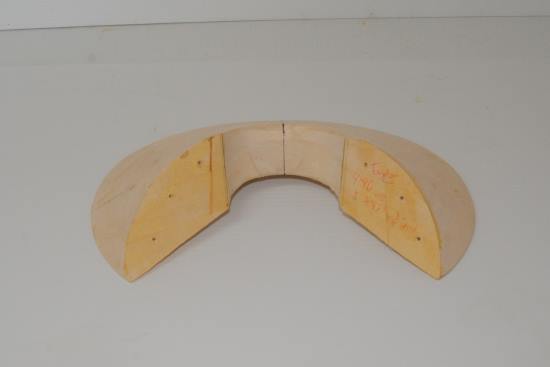
We have it labelled as “Bottom” on our database, but that doesn’t really describe it. Rod has only recently (less than a year and a half) started keeping track of which pattern he uses on the glue surface of the cantle. There are ways I see this information as being useful, but we’ll have to keep track for a while to start seeing trends with all the different cantle heights and widths and angles.
Moving on to horns...
Horn type
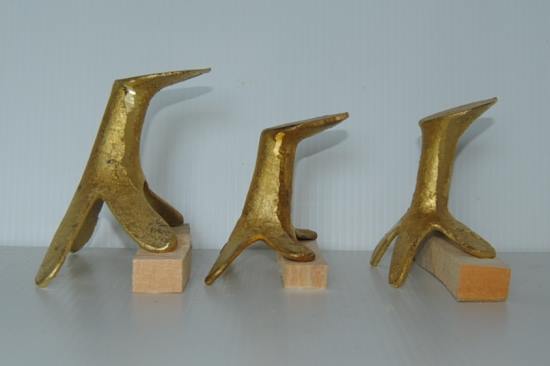
This column records if the horn is made of wood or metal and, if so, the style of metal horn used. We don't keep a lot of styles of metal horns in stock because we find that the ones we use will cover the vast majority of what our customers ask for. But it is good to be able to go back and see what we have used before for a specific maker if they want the same thing again, or even if they want something different. (I just checked the stats, and while I knew that probably over half the trees we build have wood horns, I didn't realize it was as high a percentage as it is. 65% is what I came up with. Now, if I only would learn how to use the Excel program properly I could have done that a lot faster...)
Horn height
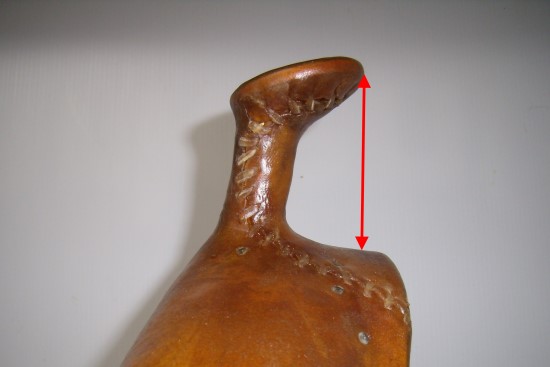
By far the most common horn height for a wood post horn is 3" tall, with 3 1/4" the runner up. We have made a few at 2 3/4" tall, but you have to be careful with the pitch you choose then or you can run out of room at the back of the horn for your dallies when roping. The most popular height for metal horns varies a bit depending on horn style, but 3" or 3 1/2" always come out on top. Taller horns (4") are preferred for some events such as cutting or barrel racing where holding the horn is needed, and we carry the 2 1/2" tall Hamley for trees where they want a horn but don't really plan to use it for much...
Cap size
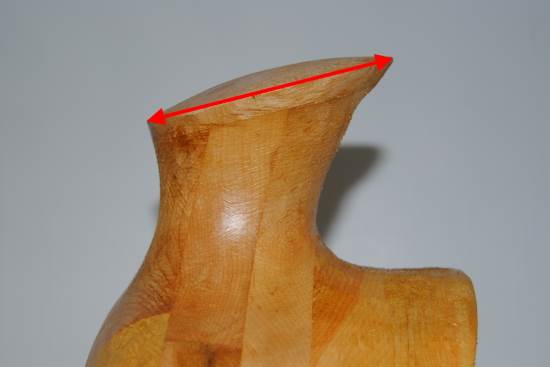
For wood post horns, our minimum cap size is 3 1/4" in order to give some definition between neck and cap. That is a pretty common size, since some people want the advantages of a wood post horn but don't want a really large cap. But if they don't want a 3 1/4", then they want something not just a little bit bigger but a fair amount bigger, and so 4" is the most common size we make. The largest we have made, other than for the charro tree, is 5 1/2" and we have done less than ten of those. Dinner plate, anyone?
The largest cap we have ever put on a metal horn was 3 3/4", and we have only ever done one of those. 2 3/4" is the most common size, closely followed by 2 1/2". Rod grinds down the caps on the metal horns as he needs to for the smaller cap sizes. The smallest practical cap is 1 1/2" as below that there is not much cap left! Out of the sixteen of these we have done, thirteen have been on Buster Welch forks, and that is for nine different makers. Interesting... (No wonder it is taking me so long to write this post...)
Horn pitch
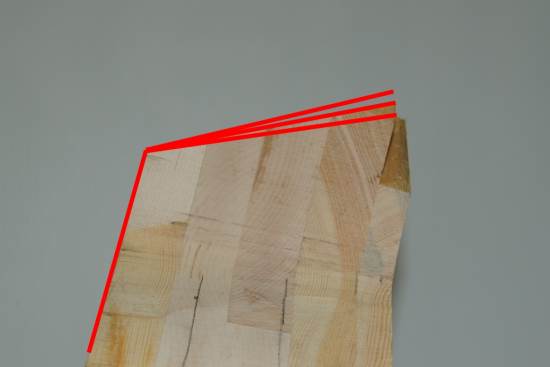
This applies only to wood post horns, since we can't change the pitch on the metal horns. Of the three common pitches, the middle one is the most common, followed by the flatter one and then the steeper one. This is true for both the leaned ahead forks and the stood up forks. I guess moderation is the key here. We have done a few with really steep pitches like the old Mexican horns had, and we have done some fairly flat pitches. The thing we want to avoid though is having a horn cap that runs downhill. That just looks ugly...
Total height
Another thing we keep track of is the total height of the tree from the table to the top of the horn. How do we use this, you ask? Well, I haven't found a way yet, but after recording this on almost 2250 trees, I just can't bring myself to quit...
Weight
We also weigh all the trees, both in the wood and the rawhide. That is how I can tell you that our really light hides add between 2 1/2 and 3 lbs to the tree, our normal hides add 3 1/2 to 4 lbs and some super heavy hides have added up to 4 3/4 lbs. I can also tell you that the vast majority of our swell forks end up weighing between 9 1/2 and 11 1/2 lbs, with the wider forks weighing more than the narrower ones on average, while the slick forks usually range between 8 and 10 lbs.
Rawhide info
We have begun to keep track of rawhide weight based on our 1x to 5x handy dandy patented hide classification system, as well as the color of the hide. By looking at differences in weight between the finished tree and the tree in the wood, I can tell how well our system is working. As for color - well, that is interesting to know, I guess...
Dennis Lane numbers
If we have numbers from the Dennis Lane Equine Back Profiling system, we record them here as well. I can always check the order form for the numbers, but sometimes it is handy to have it easy to look up with the rest of the specs.
Special requests
Here's where we record anything else we need to, such as dimensions of bevels on cantles, whether the seat is flattened from our norm and how much or if bar risers are added, if the horn is Guadalajara shaped or the cantle is shovel shaped, if the horn or the horn cap are exposed wood and what type - all sorts of things. There are also some "interesting" comments as I look over the list. "Copy tree, stupid bars" is one that stood out tonight...
So there you have it - the things we record and why.
